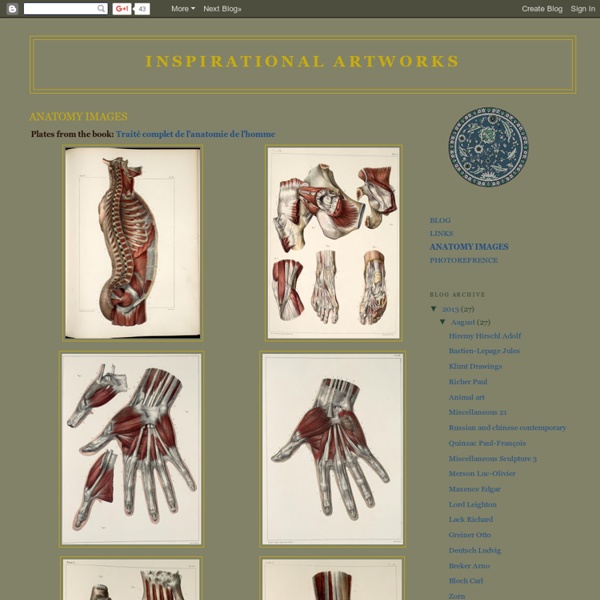



sabrine-photo-stock (Sabrina) on deviantART Anatomy For Sculptors Library reference-Humans by #ArtistsHospital on deviantART Anatomy Resources – Building Your Mental Library – Enliighten Anatomy is a very vast and complex subject, so how do you go about learning everything? Resources such as websites and books are a gerat way to begin learning about anatomy and building up your mental library. Building your mental library through observation and practice is key to being able to draw and paint successfully from your imagination. This process can take years, so don’t be discouraged if your imaginative work isn’t at the level you desire right away. In this video Daarken talks about some great anatomy books and sites that can help you learn anatomy. Be sure to check them out and link any sites that you found to be helpful. SitesInspirational Artworks BooksHyper Angle – Awesome Japanese photo reference booksGeorge Bridgman – This is the newer, cheaper version of the book I talked about in the video.Andrew LoomisHuman Anatomy for ArtistsBurne Hogarth
Human Anatomy for Artist - Ultra-high resolution human photo references – Human-Anatomy-for-Artist.com Links to Anatomy Tutorials and Guides! by #Manga-Apps on deviantART Null-Entity on deviantART MODELAGE - étude anatomique Artiste buste Anatomytools Je ne vais pas vous parler d’un artiste en particulier, qu’il soit un “écorché de la vie” ou en phase avec la société. Mon article porte sur le savoir que ceux-ci ont “bien voulu” léguer aux humbles “artistes débutants” que nous sommes. Dans votre quête aux informations, vous devrez faire la part des choses, l’autodidacte devra en permanence réfléchir à la pertinence des informations qui récoltera, celles-ci devront être analysées et comparées, vous ne prendrez rien “pour argent comptant”. Idem pour ceux qui suivent des cours sous la direction d’un artiste réputé (ou non), vous devrez aussi analyser, comparées toutes les connaissances qui vous seront transmise, en aucun cas vous ne devrez suivre aveuglement son enseignement. Artiste buste pour le modelage Écorché statue Anatomytools Les écorchés et autre reproduction du squelette humain existent depuis des siècles. Statue écorché Anatomytools Prochain article MODELAGE - étude des proportions A bientôt
Comparative Mammalian Anatomy It wasn't until I'd saved most of these that I realised that the author/illustrator of this book was none other than the dinosaur sculptor, Benjamin Waterhouse Hawkins - from a couple of days ago. Vincent Brooks completed the 10 lithographic plates. Hawkins intended with his publication "to give a comparative view of the variation in form of the bony skeleton or framework of those animals most frequently required by the artist, designer, or ornamentist." The accompanying text didn't incorporate Darwinian evolutionary theory and I get the strong feeling that either Hawkins himself or at the behest of Sir Richard Owens, held contrary views. A Comparative View of the Human and Animal Frame by Benjamin Waterhouse Hawkins 1860 is online among the History of Science website at the fabulous University of Wisconsin - my favourite repository. [I'm away in the countryside at the moment so posting is a tad intermittent.
kizysem (Shen Ke) on deviantART